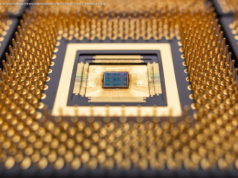Newcomers to Samsung or Android will be hard-pressed to find a better mix of design, size, power, and performance.
Seen in a vacuum, the Samsung Galaxy S23 is an excellent, near-perfectly proportioned Android handset that meets or exceeds expectation.
The mobile phone market, though, is not a vacuum, and the Galaxy S23 is inevitably judged against all the best smartphones, including its own stellar sibling, the big and bold Samsung Galaxy S23 Ultra, and its nearest Apple competitor, the iPhone 14 Pro.
In that light, Samsung’s latest flagship acquits itself nicely, with an excellent camera array, the most powerful Qualcomm SoC yet, a gorgeous screen and a multitude of other capabilities. But it does not outshine the S23 Ultra or the iPhone 14 Pro. In some instances, I found the S23 equal to anything Apple threw at it. In others, I wondered why the Galaxy S23 was – leaving aside the refined design – so similar to the Galaxy S22 and lacking compared to the beast-like Galaxy S23 Ultra.
At the very least, Samsung could’ve equipped the Galaxy S23 with last year’s S22 Ultra 108MP main camera sensor. Instead, it chose to leave the cameras (save the selfie cam) untouched. Don’t get me wrong, the S23 takes lovely photos but Samsung could’ve left the battery life untouched (200mAh more is not that exciting), added a 10MP periscope zoom, and radically improved the handset’s Space Zoom capabilities too.
Naturally, it’s hard to recommend that someone who owns the still-stellar Samsung Galaxy S22 upgrade to the S23, because it’s not much of an upgrade. That said, newcomers to Samsung or the Android space (as well as users of much older Galaxy S models) will be hard-pressed to find a better mix of design, size, power, utility, communication, battery life and photographic performance.
6.1 inches turns out to be a lovely mid-spot for most hands and makes you wonder why the 6.7-inch S23 Plus – which offers only a bigger battery and larger heat-damping vapor chamber – exists. For comparison’s sake, though, I suggest you read our early, hands-on Samsung Galaxy S23 Plus review and Alex Todd-Walker’s extensive Samsung Galaxy S23 Ultra review.
Whichever S23 handset you choose, you’ll get the same performance, powered by the new Qualcomm ‘Snapdragon 8 Gen 2 Mobile Platform for Galaxy’. GeekBench 5 tests put the mobile SoC within shooting distance of Apple’s industry-leading A16 Bionic but the reality is that numbers do not tell the full story. There’s scarcely a place where the Galaxy S23 can’t hold its own against an iPhone 14 Pro.
The phone’s cameras can shoot up to 3x optical zoom and image-processor-enhanced 30x Space Zoom. It can also shoot 8K video, that you can do light editing on in the phone’s camera app. It’s an able gaming system, content consumption, and productivity handset, with solid 5G support thanks to – in my case – the T-Mobile network.
If you liked the camera array on the S22, you’ll be similarly pleased with the Galaxy S23. It’s just as good as the former, but with the added benefit of better image processing and new Camera app tricks for night and astrophotography.
At least the front-facing camera got a nice 2MP bump to 12MP and takes some impressive standard and portrait selfie photos.
The flat 6.1-inch Dynamic AMOLED 2X Infinity-O FHD+ display (which has a perfectly round hole-punch at the top, center for the selfie camera) is, mostly, a replica of the S22’s but with improved variable refresh rates of between 48Hz and 120Hz, and a new Gorilla Glass Victus 2 covering on the front (the brushed glass on the back is made of the same material).
Aside from the redesigned back that loses the awkward, raised contour around the cameras, the dimensions are virtually unchanged from the Galaxy S22. It still feels solid and comfortable to hold. I like the brushed glass back because it makes the handset feel a little less slip-prone. As before, the phone is IP68 rated for dust protection and drops in up to 1.5 meters of fresh water for up to 30 minutes.
This is unquestionably one of the best smartphones of 2023, but it still might not offer enough reasons to upgrade from your also-excellent Galaxy S22.
Samsung launched the Samsung Galaxy S23 (along with the Galaxy S23 Plus and Galaxy S23 Ultra) on February 1. It was made available for pre-order on the same day and shipped as of February 17. You’ll find the best prices and offers in our Galaxy S23 deals roundup.
At $799.99, pricing on the Galaxy S23 remains unchanged since last year, but only in the US, with Australia seeing a AU$10 price hike across both models, while UK consumers are harder-hit by an £80 price jump YoY for both the 128GB and 256GB builds.
On the one hand, I give Samsung credit for super-charging the CPU, refining the design, enlarging the battery, and updating that selfie camera without a big price hike. Still, this isn’t a major handset overhaul, so I’d expect no less. As for why the phone is more expensive elsewhere, there may be other global economic factors at play.
The one reason you might choose to spend more is if you want the bigger screen and heftier base storage (256GB as opposed to 128GB) of the Samsung Galaxy S23 Plus, which starts at $999 / £1,049. The ultimate upgrade in this line, though, is the Samsung Galaxy S23 Ultra ($1,199 / £1,249); with a 200MP camera, 100x Space Zoom, a huge battery, and the included S Pen stylus. Also worth noting is that the Galaxy 23 comes in at $200 less than the iPhone 14 Pro. It’s priced similarly to the iPhone 14 but the spec comparison really goes toward the Pro.
Check out our Galaxy S23 vs Galaxy S23 Plus vs Galaxy S23 Ultra comparison for a more detailed look at how the three phones differ.
The Samsung Galaxy S23 comes in two storage variations, 128GB and 256GB, both have 8GM of RAM.
It’s remarkable how much you can change the look of a smartphone by subtraction.
Samsung didn’t redesign its Galaxy S phones. Instead, on the Galaxy S23 and S23 Plus, it milled away the raised contour metal surrounding the phone’s three cameras. It’s a cleaner and more appealing look, though it almost makes the Galaxy S23 look a little bit more like a legion of other Android smartphones and, yes, the iPhone 14 line. Meanwhile, the slightly curved stainless-steel-looking aluminum band gives the phone a hint of retro aesthetic that harkens back to the Galaxy series’ humble beginnings.
That chiseling away of the contour also makes the Galaxy S23 cameras look larger, but they’re not. These lenses are the same size as last year.
It is a beautifully crafted, IP68-rated (1.5M of water for 30 minutes) device featuring premium materials from the brushed Gorilla Glass Victus 2 on the back to the glossy version of that material covering the 6.1-inch edge-to-edge screen.
Samsung adjusted the position of some of the antennas and the buttons, as well, though you may not notice the difference. There’s still a razor-thin speaker slot at the top edge of the screen, and a speaker grill along the bottom edge. The Samsung Galaxy S23 line offers eSIM support but they all still feature a physical SIM slot, as well. As with the last few generations, there’s also no 3.5mm jack. During my tests, I paired the phone with a nice set of Bluetooth Samsung Galaxy Buds 2 Pro.
At 70.86 x 146.3 x 7.62 mm, the Galaxy S23 is essentially the same size and weight (168g) as before. I’ve come to believe that this is the sweet spot of phone sizes. It basically matches my Apple iPhone 14 Pro and, like that handset, is a perfect fit for my average-sized hands. The S23 Plus and, especially that powerful S23 Ultra, are unwieldy for my hands and jean pockets.
It’s also worth mentioning here that while the phone ships with a USB-C charging and data cable, the charging adapter is sold separately.






